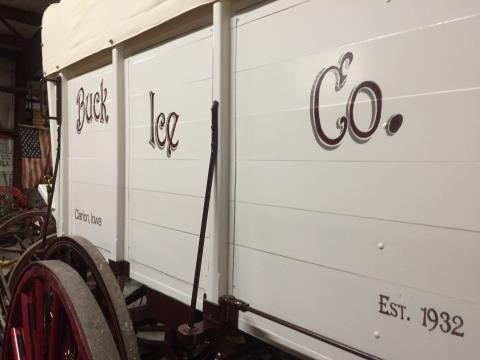When only the very well off had refrigerators - merchants, bankers, professional people maybe- most folk had an ice box. Ice would be delivered one day a week. A large square white card with the word ICE in the center of the card and 25-50-75-100 on the sides was put in the front window. This told the ice man how much ice was wanted. The ice truck was originally a wagon pulled by a team of horses. A man with bulging muscles wearing a rubber tunic over his undershirt would throw his tongs over a cake of ice, drag it out and hang it on the scales at the back of the wagon. He'd chip away at the chunk with his ice pick until it was the right weight. Kids would enjoy watching, hoping to catch slivers of ice to suck on. The ice was then put into a box on the porch or some houses had a small door in the kitchen wall and an opening directly into the back of the ice box so the ice could be put directly in. Twenty-five pounds cost 20 cents; 50 pounds for 40 cents; 75 pounds for 60 cents and 100 pounds cost 75 cents. Content can be used with the following standards: SS-Econ. 9-12.24 Iowa Impact Upon Economy in a lesson on the ice trade. For any use other than instructional resources, please check with the organization that owns this item regarding copyright restrictions.
2018.054.006 [Wagon, Ice]
Legal Status
Ownership of this resource is held by the Heartland Museum Foundation and has been provided here for educational purposes only, specifically for use in the Iowa Museum Association's "Teaching Iowa History" project. It may not be downloaded, reproduced or distributed in any format without written permission from the Rights Holder. For information on U.S. and International copyright laws, consult an attorney.

